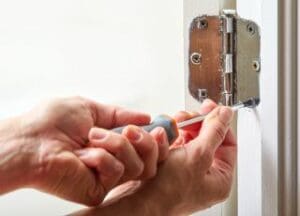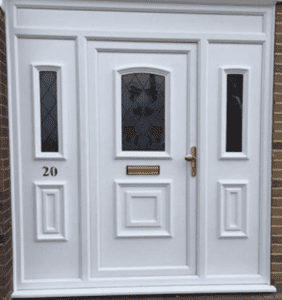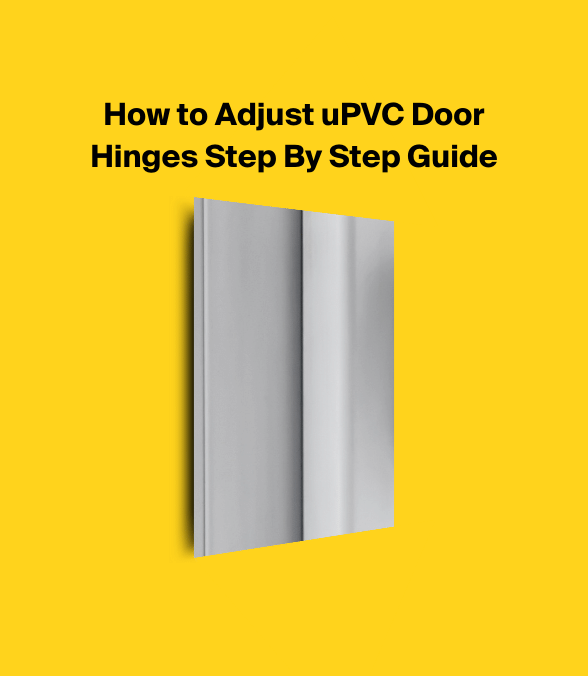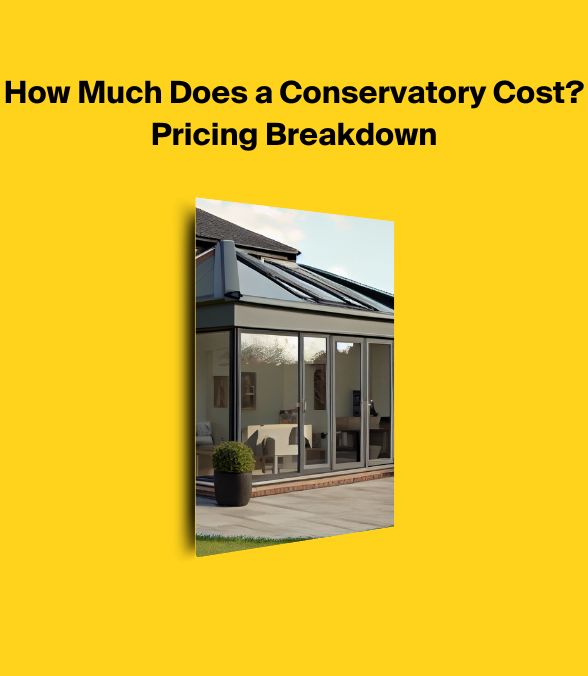Adjust the Hinges on a uPVC Door
Your uPVC door serves as the gateway to your home, protecting your family and belongings from the outside world. But did you know that maintaining and adjusting uPVC door hinges is essential for optimal performance, security, and durability?

In this comprehensive guide, we'll delve into the world of uPVC door hinges.
We'll provide you with all the information needed to understand, adjust, and troubleshoot common issues, including how to adjust a uPVC door hinge.
Say goodbye to dropped doors and draughty gaps, and welcome a well-functioning, secure, and energy-efficient entrance to your home!
Short Summary on how to adjust uPVC door hinges
- Understanding and adjusting uPVC door hinges is essential for optimal performance.
- Flag, butt, and rebate hinges offer different levels of adjustability to achieve the desired fit.
- Regular preventive maintenance checks can help reduce unexpected breakdowns, while professional help should be sought if adjustments are unsuccessful in addressing alignment or draught issues.
Understanding uPVC Door Hinges and Their Adjustments
uPVC doors are popular choices for their durability, insulation, and low maintenance requirements. It's relatively easy to adjust uPVC doors.
However, proper alignment of the different types of door hinges is crucial to ensure that the door fits securely into its frame, preventing draughts and ensuring smooth operation.
Assessing the alignment of your modern uPVC door involves checking if the gap between the door and the frame is uniform or if the door opens and closes without catching on the frame. If your door is misaligned, adjusting or replacing the hinges may be necessary.
What are butt hinges?
Butt hinges are a common type of hinge used in uPVC doors, consisting of two rectangular leaves joined together by a hinge pin. These hinges are easy to maintain and can support heavy loads, making them a reliable choice for door hinge applications.
However, they are less versatile than flag hinges, offering limited adjustability.
Despite their simplicity, butt hinges play an essential role in providing a secure hold and easy maintenance for uPVC door hinges. When you adjust butt hinges, it requires precision, which we will discuss in later sections.
What are flag hinges?
Flag hinges are the most commonly used type of hinge for uPVC doors, offering adjustable settings and easy maintenance. They are designed to enable maximum adjustment, ensuring the optimal fit of your uPVC door.
Adjusting flag hinges involves altering the height and horizontal positions of the hinge, providing more versatility compared to butt hinges.
Understanding the differences between uPVC door flag hinges and butt hinges is important in knowing how to properly adjust each type. In the following sections, we will delve into the specific adjustment techniques for how to adjust flag hinges.
What are rebate hinges?
Rebate hinges are specialised and reliable hinges often found in uPVC doors. Their unique design features a lip or rebate, which serves to secure the door and minimise draughts.
Adjusting rebate hinges requires using an Allen key to alter the screws on the side of the hinge for lateral movement, as well as adjusting the hinge connection to the door in some cases.
Although rebate hinges are less adaptable than flag hinges, they offer a secure and specialised option for your uPVC door. Now that we have a clear understanding of the different types of uPVC door hinges, let's move on to the step-by-step guide for adjusting them.
Step-by-Step Guide to Adjusting uPVC Door Hinges
Before attempting to adjust your uPVC door hinges, it is essential to identify the type of hinge your door has, whether it's a butt hinge, flag hinge, or rebate hinge. Gather the necessary tools for the adjustment, such as an Allen key and a screwdriver.
There are five methods for adjusting uPVC door hinges, which we will explore in the following sections. If you are uncertain about any aspect of the adjustment process, it is advisable to seek professional assistance to avoid causing damage to your door or hinges.
We will now delve into the specific techniques for adjusting each type of hinge, starting with butt hinges.
Adjusting Butt Hinges on a uPVC door
Adjusting the hinges on your uPVC door requires precise vertical movement using an Allen key. To adjust the height of your uPVC door, use the Allen key to turn the screw that controls the vertical movement of the hinge.
Older butt hinges may only feature adjustable pins at the top and bottom, while newer ones typically have two screws on the side in addition to the pins at the top and bottom.
Adjust the hinges until the door moves freely and without squeaking. Check that the spacing is even on both sides. This will ensure proper alignment and a secure fit of your uPVC door.
Adjusting flag hinges on a uPVC door
Fine-tuning the flag hinges on your uPVC door involves adjusting the height and horizontal movement using an Allen key. To access the lateral adjustment screw, remove the top cover cap of the hinge.
Turning the screw clockwise or counterclockwise will result in the door moving towards or away from the hinge.
For height adjustment, use an Allen key on the screw located on the door side of the hinge. Once adjustments have been implemented, it is essential to test the door to ensure that it is properly adjusted and functioning optimally.
Adjusting rebate hinges on a uPVC door
Perfecting the alignment of your uPVC door with rebate hinges involves adjusting the screws on the side of the hinge for lateral movement. The hinge can be adjusted laterally up to 2mm, providing flexibility in achieving the desired alignment.
To loosen the hinge, move the adjusters away from the door, and to tighten the hinge, move the adjusters closer to the door.
By following these steps, you can effectively adjust your rebate hinges to achieve the desired alignment and secure fit of your uPVC door.
Troubleshooting Common uPVC Door Issues
As uPVC doors age, they may experience common issues such as dropped or dragging doors, problems with lock functionality, and draughts or gaps around the door frame.
In the following sections, we will explore solutions to these common uPVC door issues.
Fixing a Dropped or Dragging uPVC Door
To fix a dropped or dragging uPVC door, start by adjusting the hinges and compression screws to ensure a proper fit and alignment. Tighten the screws and assess the fit by closing the door, checking if the door is properly fitted into the frame.
If the door still drops or allows cold air in, consider seeking professional help or replacing the door.
By following these steps, you can effectively fix dropped or dragging uPVC doors and restore their performance and functionality.
Ensuring Proper Lock Functionality
To maintain proper lock functionality, it's essential to regularly clean the lock, lubricate it, adjust it if necessary, and verify that the door is correctly installed.
Adjusting the hinges on your uPVC door to ensure proper alignment is also crucial for smooth lock operation.
By regularly inspecting and maintaining your uPVC door lock, you can ensure the security and functionality of your door for years to come.
If your locks are beyond repair and maintenance, you may need to change your uPVC door locks and replace them with a new one.
Eliminating Draughts and Gaps
Eliminating draughts and gaps in your uPVC door is essential for energy efficiency and comfort. Adjusting the hinges and ensuring proper alignment should be sufficient to eliminate draughts and gaps.
Additionally, inspect the door for cracks or gaps in the seals, and consider replacing or adjusting the door's stripping to achieve a tight seal.
By following these steps, you can effectively eliminate draughts and gaps in your uPVC door, ensuring a comfortable and energy-efficient home.
Preventive Maintenance and Regular Checks
Preventive maintenance and regular checks are essential to ensure the proper operation and safety of your uPVC door.
Conducting regular inspections and cleaning your door and its components, lubricating moving parts, replacing worn or damaged parts, and performing regular repairs are all crucial aspects of preventive maintenance.
The primary benefits of preventive maintenance include the reduction of the risk of unexpected breakdowns, improved equipment performance, and increased efficiency.
By adopting a proactive approach to maintaining your uPVC door, you can prolong its lifespan and ensure its optimal performance for years to come.
When to Fix or Consider Replacement uPVC Doors
If you have difficulty adjusting your uPVC door hinges or if the door is still misaligned or allowing draughts after adjustments, it may be advisable to seek professional help or consider replacing the door.
uPVC doors have an expected lifespan of between 10 to 35 years, depending on the quality. Seeking professional assistance or replacing your uPVC door when necessary will ensure continued security, energy efficiency, and durability.
Alternative Door Options: Composite Doors
If you are considering replacing your uPVC door or exploring alternative door options, composite doors offer an excellent choice.
Composite doors provide superior weather resistance, thermal insulation, security, and durability compared to traditional uPVC doors.
We have a guide on composite doors vs uPVC doors, highlighting the pros and cons of each, along with which type could be the best for your property.
These doors are a popular option for those seeking a more energy-efficient and secure entrance to their home.
Summary
In conclusion, maintaining and adjusting your uPVC door hinges is essential for optimal performance, security, and durability.
By following the comprehensive guide provided in this blog post, you will be well-equipped to understand, adjust, and troubleshoot common uPVC door hinge issues.
Regular preventive maintenance and checks will ensure the longevity and proper operation of your uPVC door, keeping your home safe, comfortable, and energy efficient.
Don't let a misaligned door stand in the way of your peace of mind; take action today to ensure your uPVC door is functioning at its best.
Frequently Asked Questions
Is there any adjustment on uPVC doors?
Yes, there is an adjustment for uPVC doors. To make these adjustments, you need to access the hinges to adjust slots and screws in order to tweak the door's position.
Depending on what kind of issue needs to be fixed, it may require different approaches, but the basic process remains the same.
How do you adjust a door hinge to close a gap?
To adjust a door hinge and close any gap, start by unscrewing the screws of the relevant hinge. Position the cardboard between the frame and hinge to get the desired gap, and then securely fasten the screws back in place.
This should close any existing gaps, allowing the door to open and close more smoothly.
Why is my uPVC door not closing properly?
Based on the answers provided, it is likely that your uPVC door is not closing properly due to loose hinges or changes in weather conditions.
It is important to take action to ensure the proper functioning of your door and ensure your home's security.
Why is my uPVC front door so hard to close?
Based on the answers provided, it is likely that your uPVC front door is hard to close due to either a drop in the door or damp/humid conditions. To restore your door's smooth closing mechanism, you may need to adjust the hinges and/or ensure your door is kept dry.
You may also want to look at the cost of a new front door, if you are thinking of purchasing a higher quality door rather than repairing an old one.

Why is my uPVC door not closing at the bottom?
It is likely that the door alignment needs to be adjusted or the lock strike/keep or roller points need replacing.
Additionally, something may be stuck in the way of the door closure, such as a doormat.
Extreme temperatures may also cause the door to expand or contract, resulting in the door not closing.









